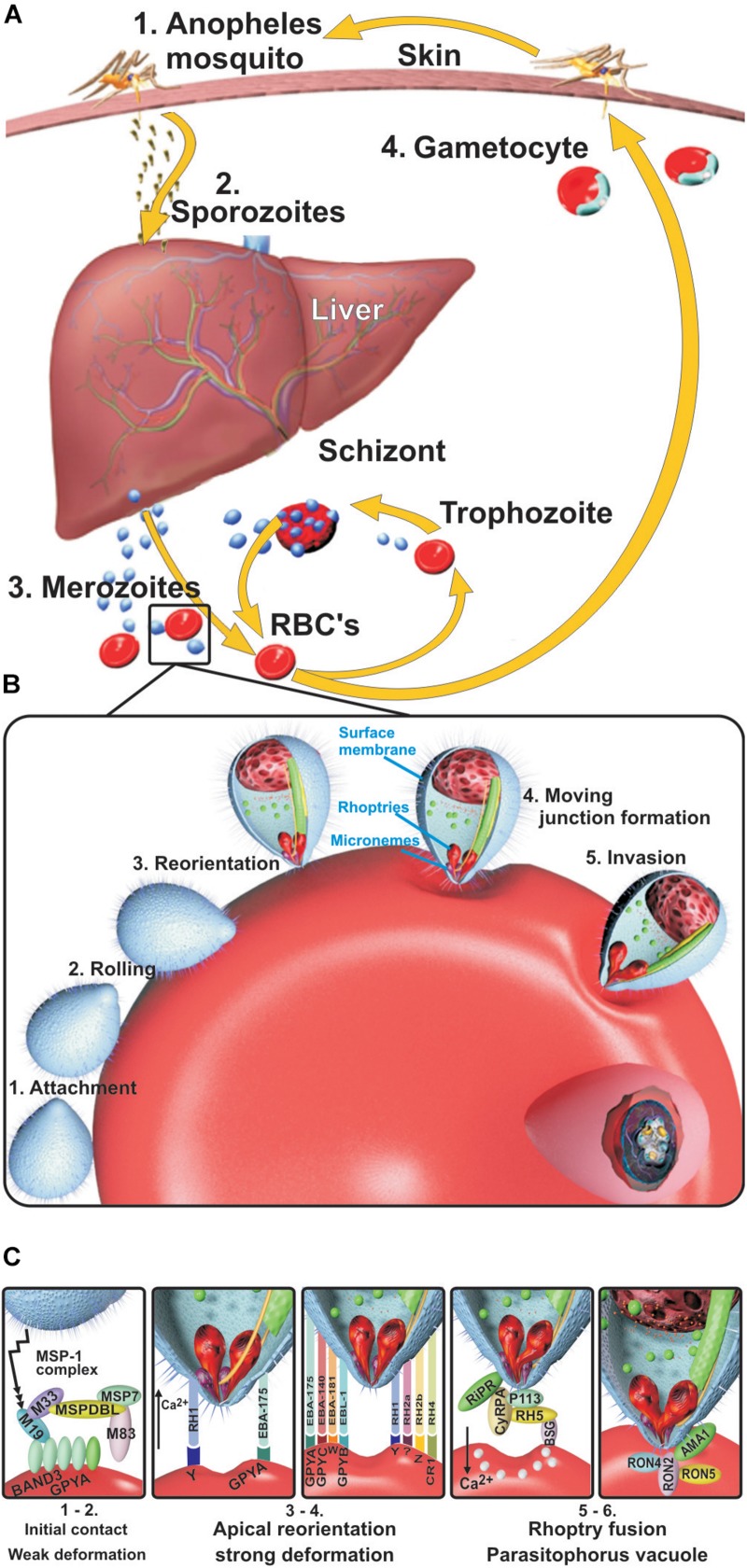FIGURE 1.
Plasmodium falciparum life cycle. (A) Liver stage. Sporozoites (Spz) inoculated during the bite of a female Anopheles mosquito migrate to hepatic cells through the host’s blood stream, thereby infecting hepatocytes where they reproduce (30,000–50,000 per Spz) (pre-erythrocyte cycle) and become transformed into merozoites (Mrz). When Mrz are released into the blood stream, they invade the red blood cells (RBCs) (erythrocyte cycle), producing 30–50 new Mrz every 48 h during which the cycle lasts, inducing the release of subproducts, immune system molecule production, and the symptoms of the disease, which can cause death in some people. Some Mrz become gametocytes, which then become digested by other mosquitos during fresh biting to start their sexual cycle and produce new Spz. (B) Blood stage. Mrz roll over RBC and adhere to their surface. They become reorientated toward their apical pole by high-affinity interactions between microneme proteins and erythrocyte receptors, thereby deforming the RBC membrane to create a tight junction (TJ) to enable their entry. The rhoptry proteins are then released onto the RBC surface, and the parasitophorous vacuole membrane (PVM) starts forming; the parasite progressively develops after entry into ring, trophozoite, and schizont forms. (C) Mrz interaction with ligands and their erythrocyte receptors. The MSP1 complex interacts with BAND3-GPYA, EBA-140 with GYPC, EBA-175 with GYPA, EBA-181 with the E receptor, EBL1 with GYPB, RH1 with the Y receptor, RH2b with the Z receptor, RH4 with CR1, and RH5 with BSG. GYPA: glycophorin A, GYPB: glycophorin B, GYPC: glycophorin C, BSG: basigin, PVM: parasitophorous vacuole membrane, CR1: complement receptor 1.

